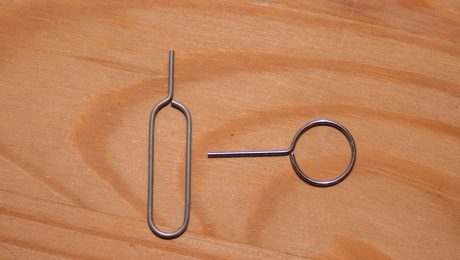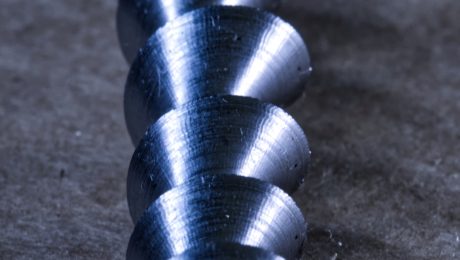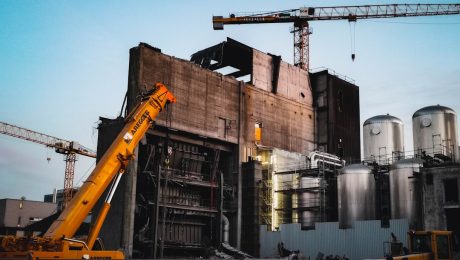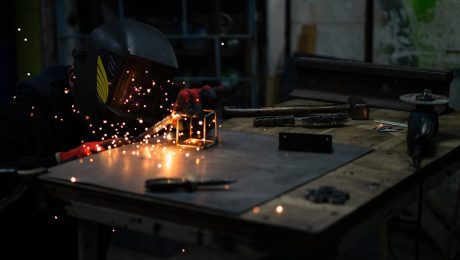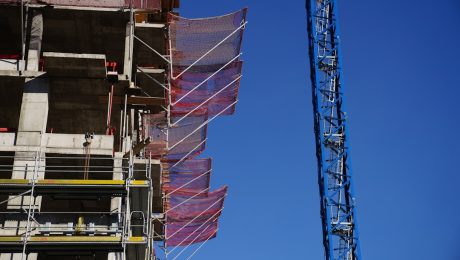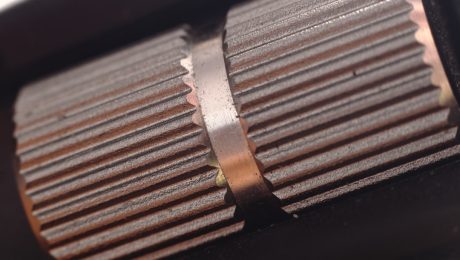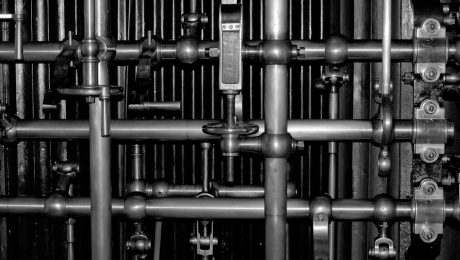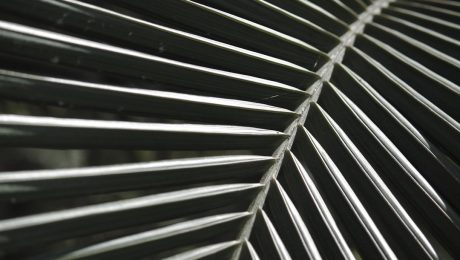Pipe bending and straightening are crucial processes in various industries, from construction and manufacturing to plumbing and oil and gas. Achieving precise bends and straightness is essential for functionality, safety, and aesthetics. This comprehensive guide explores the various methods, tools, and considerations involved in mastering these techniques.
1. Understanding Pipe Material and its Impact on Bending and Straightening
The material of the pipe significantly influences the bending and straightening process. Different materials possess varying degrees of flexibility, ductility, and strength. Steel pipes, for example, require more force and specialized equipment for bending compared to copper or aluminum pipes. Understanding the material’s properties is crucial for selecting the appropriate bending and straightening techniques and tools to avoid damage or failure.
Steel Pipes: These require powerful bending machines or hydraulic presses due to their high tensile strength. Improper bending can lead to cracking or weakening. Heat may be necessary for larger diameter pipes to aid in the bending process.
Copper Pipes: Relatively malleable, copper pipes can be bent manually using hand tools like pipe benders. However, excessive bending can lead to work hardening and cracking. Proper lubrication is essential to prevent damage.
Aluminum Pipes: Similar to copper, aluminum is relatively easy to bend. However, it’s softer and more susceptible to kinking if not handled carefully. Using appropriate bending tools and techniques is vital.
PVC Pipes: These are relatively brittle and require careful handling. Excessive force can cause cracking. Heating can make them more pliable, but overheating can damage the material.
2. Exploring Different Pipe Bending Methods and Technologies
Several methods exist for bending pipes, each suited to different materials, diameters, and desired bend radii. These methods range from manual techniques to sophisticated automated systems.
Manual Bending: Using hand tools such as pipe benders, this method is suitable for smaller diameter, softer pipes. It’s cost-effective but labor-intensive and may not yield consistent results for complex bends.
Hydraulic Bending: Hydraulic presses and benders utilize hydraulic pressure to bend pipes, offering greater control, precision, and the ability to handle larger diameter and thicker-walled pipes.
Rotary Draw Bending: This sophisticated method uses a rotating die to pull the pipe through a bending mandrel, resulting in consistent and accurate bends, particularly useful for tight radii.
Roll Bending: This method uses three rolls to progressively bend the pipe, ideal for larger diameter pipes and long bends.
3. Effective Techniques for Pipe Straightening
Straightening bent pipes requires careful consideration of the material and the degree of bending. Improper straightening can weaken the pipe, rendering it unusable.
Manual Straightening: For minor bends in softer materials, gentle manual straightening using hammers and mallets might suffice. However, this method is prone to errors and can easily damage the pipe.
Hydraulic Straightening: Hydraulic presses can effectively straighten severely bent pipes by applying controlled force. This method offers greater precision and control compared to manual straightening.
Three-Roll Straightening: Similar to roll bending, three rolls are used to progressively straighten the pipe. This method is effective for long sections of bent pipe.
Mechanical Straightening: Specialized straightening machines utilize mechanical force to correct bends, often used for mass production and high-precision straightening.
4. Essential Tools and Equipment for Pipe Bending and Straightening
The selection of tools and equipment depends largely on the pipe material, diameter, and the desired bend or straightness. Investing in high-quality tools ensures accuracy and prevents damage to the pipe.
Pipe Benders (Hand-operated): Various types are available, including spring benders, hickey benders, and roller benders, each suitable for different pipe sizes and materials.
Hydraulic Presses and Benders: These are essential for larger diameter pipes and require significant investment. They offer precise control and high bending capacity.
Pipe Straighteners (Mechanical and Hydraulic): These machines are designed for straightening bent pipes efficiently and accurately. The choice depends on the pipe material, size, and the severity of the bend.
Measuring Tools: Accurate measurement is crucial. Use calibrated measuring tapes, protractors, and levels to ensure precision.
Safety Gear: Always wear appropriate safety gear, including gloves, eye protection, and hearing protection, when working with pipe bending and straightening equipment.
5. Safety Precautions and Best Practices
Pipe bending and straightening can be hazardous if proper safety precautions are not followed. Always prioritize safety to prevent injuries and damage to equipment.
Proper Training: Ensure that all personnel involved are properly trained in the safe operation of the equipment.
Use of Safety Gear: Always wear appropriate safety gear, including gloves, eye protection, and hearing protection.
Regular Equipment Maintenance: Regularly inspect and maintain all equipment to ensure safe operation.
Work Area Safety: Maintain a clean and organized work area to prevent accidents.
Emergency Procedures: Establish and communicate clear emergency procedures in case of accidents.
By understanding the principles of pipe bending and straightening, selecting the appropriate tools and techniques, and prioritizing safety, you can achieve precise and reliable results in your projects. Remember to always consult relevant industry standards and safety regulations.
SEO Tags: pipe bending, pipe straightening, pipe bending machines, hydraulic pipe bending, pipe bending techniques
For decades, galvanized steel pipes have been a mainstay in plumbing and construction projects worldwide. Their enduring popularity stems from a combination of factors, making them a cost-effective and reliable solution for various applications. This comprehensive guide delves into the key advantages of galvanized pipes, helping you understand why they remain a top choice for professionals and homeowners alike.
Unmatched Durability and Longevity
One of the most significant advantages of galvanized pipes is their exceptional durability. The galvanization process, which involves coating the steel pipe with a layer of zinc, significantly enhances its resistance to rust and corrosion. Unlike many other metal pipes, galvanized pipes can withstand harsh environmental conditions, including exposure to moisture, soil, and fluctuating temperatures. This inherent durability translates to a significantly longer lifespan compared to alternative materials like copper or plastic pipes. In many cases, galvanized pipes can last for 50 years or more with proper installation and maintenance, representing a long-term investment that minimizes the need for frequent replacements.
Superior Corrosion Resistance: The Zinc Advantage
The core of galvanized pipe’s longevity lies in its zinc coating. Zinc acts as a sacrificial anode, meaning it readily corrodes in place of the underlying steel. This prevents the steel from rusting, even when exposed to scratches or minor damage. This superior corrosion resistance is particularly crucial in applications where pipes are exposed to harsh chemicals or acidic water. While other materials may succumb to degradation under such conditions, galvanized pipes maintain their structural integrity, ensuring reliable water flow and preventing leaks.
Cost-Effectiveness: A Long-Term Investment
While the initial cost of galvanized pipes might seem slightly higher than some alternatives like PVC, the long-term cost-effectiveness is undeniable. Their extended lifespan drastically reduces the frequency of replacements and associated labor costs. This makes them a financially sound choice, especially for large-scale projects or applications where frequent pipe replacements would be disruptive and expensive. The reduced maintenance requirements further contribute to the overall cost savings over the pipe’s lifetime.
Versatility in Applications: From Plumbing to Structural Support
Galvanized pipes aren’t limited to plumbing systems. Their strength and durability make them suitable for a wide range of applications. They are frequently used in structural support systems, fencing, handrails, and even in industrial settings where strength and resistance to corrosion are paramount. This versatility makes them a valuable asset in diverse construction and engineering projects, offering a single solution for multiple needs.
Ease of Installation and Maintenance: Simple and Straightforward
Galvanized pipes are relatively easy to install, requiring standard plumbing tools and techniques. Their robust construction allows for straightforward cutting, threading, and joining. This simplifies the installation process, reducing labor costs and project timelines. Furthermore, maintenance is minimal. Regular inspections to check for leaks or corrosion are usually sufficient, and any necessary repairs are often straightforward due to the pipe’s robust nature and readily available fittings.
In conclusion, galvanized pipes offer a compelling combination of durability, corrosion resistance, cost-effectiveness, versatility, and ease of installation. Their long-term benefits make them a superior choice for numerous plumbing and construction applications, ensuring reliable performance and minimizing long-term costs. While modern alternatives exist, the enduring legacy of galvanized pipes speaks to their inherent qualities and continued relevance in the industry.
SEO-Friendly Tags:
- galvanized pipes
- galvanized steel pipes
- plumbing pipes
- corrosion resistant pipes
- durable plumbing
The steel industry, a cornerstone of global infrastructure and manufacturing, relies heavily on an efficient and robust supply chain. From the extraction of raw materials to the delivery of finished products, navigating the intricacies of this process is crucial for profitability, sustainability, and market competitiveness. This post delves into the key aspects of supply chain management within the steel industry, exploring the challenges and opportunities presented in this demanding sector.
Sourcing Raw Materials: The Foundation of Steel Production
The steelmaking process begins with the sourcing of essential raw materials, primarily iron ore, coal, and limestone. Securing a consistent and reliable supply of these materials at competitive prices is paramount. This involves establishing strong relationships with mining companies, negotiating favorable contracts, and managing geopolitical risks that can impact availability and pricing. Furthermore, the increasing focus on sustainable sourcing practices necessitates careful consideration of environmental impacts, including carbon emissions associated with mining and transportation. Companies are increasingly adopting strategies like responsible sourcing certifications and investing in technologies to reduce the environmental footprint of raw material extraction.
Steel Production and Manufacturing: Optimizing the Process
The transformation of raw materials into finished steel products is a complex and energy-intensive process. Efficient supply chain management within the production phase involves optimizing production schedules, managing inventory levels, and ensuring the seamless flow of materials through various stages of manufacturing. This requires sophisticated planning systems, real-time data analysis, and advanced manufacturing technologies such as automation and robotics. Minimizing downtime, reducing waste, and improving overall equipment effectiveness (OEE) are crucial for maximizing productivity and minimizing production costs. Furthermore, the integration of Industry 4.0 technologies like predictive maintenance and digital twins can significantly enhance efficiency and reduce unforeseen disruptions.
Logistics and Distribution: Getting Steel to Market
Once steel products are manufactured, efficient logistics and distribution are crucial for timely delivery to customers. This involves selecting appropriate transportation modes (rail, road, sea), optimizing delivery routes, and managing warehousing and inventory. The sheer volume and weight of steel products necessitate specialized transportation and handling equipment. Effective logistics management requires robust tracking systems, real-time visibility into shipments, and strong partnerships with logistics providers. Furthermore, optimizing transportation routes to minimize fuel consumption and carbon emissions is becoming increasingly important in a context of growing environmental concerns. The adoption of technologies like blockchain for tracking and tracing shipments is also gaining traction within the industry.
Inventory Management: Balancing Supply and Demand
Maintaining optimal inventory levels is a critical aspect of steel supply chain management. Holding excessive inventory ties up capital and increases storage costs, while insufficient inventory can lead to production delays and lost sales. Effective inventory management requires accurate demand forecasting, efficient warehousing systems, and robust inventory tracking technologies. The use of advanced analytics and machine learning algorithms can help companies improve forecasting accuracy and optimize inventory levels. Furthermore, the implementation of just-in-time (JIT) inventory systems can help reduce storage costs and minimize waste. The ability to accurately predict and respond to fluctuations in market demand is key to successful inventory management.
Emerging Technologies and the Future of Steel Supply Chain Management
The steel industry is undergoing a digital transformation, with emerging technologies playing an increasingly important role in supply chain optimization. Artificial intelligence (AI) and machine learning (ML) are being used for predictive maintenance, demand forecasting, and route optimization. Blockchain technology offers enhanced transparency and traceability throughout the supply chain, enabling better tracking of materials and reducing the risk of fraud. The Internet of Things (IoT) allows for real-time monitoring of assets and processes, providing valuable data for improved decision-making. The adoption of these technologies is not merely optional; it’s becoming a necessity for companies to remain competitive and adapt to the evolving demands of the global market. Investing in digitalization and upskilling the workforce are crucial for realizing the full potential of these technologies.
In conclusion, mastering supply chain management is essential for success in the steel industry. By focusing on efficient sourcing, optimized production, effective logistics, robust inventory management, and the adoption of emerging technologies, steel companies can enhance their competitiveness, improve profitability, and contribute to a more sustainable future.
Tags: steel supply chain, steel industry, supply chain management, steel manufacturing, steel logistics
In the competitive landscape of today’s manufacturing industry, delivering flawless products is no longer a luxury; it’s a necessity. The pursuit of zero-defect production goals, while seemingly unattainable, offers significant advantages, from enhanced brand reputation to reduced costs and improved customer satisfaction. This post delves into the strategies, challenges, and ultimate rewards of striving for perfection in your manufacturing process.
Understanding the Zero-Defect Philosophy
The concept of zero-defect production isn’t about achieving absolute perfection, where no defects ever occur. Instead, it represents a mindset—a relentless pursuit of excellence and continuous improvement. It’s about minimizing defects to a level that’s practically negligible, impacting neither the consumer nor the bottom line. This philosophy requires a fundamental shift in organizational culture, emphasizing proactive defect prevention rather than reactive defect detection. It necessitates a deep understanding of the production process, identifying potential failure points and implementing robust preventative measures. This approach requires buy-in from every level of the organization, fostering a culture of accountability and shared responsibility for quality.
Implementing Effective Quality Control Measures
Effective quality control is the backbone of any zero-defect strategy. This involves implementing a multi-layered approach that encompasses various stages of production. This starts with robust design and engineering processes, ensuring that the product is inherently robust and less prone to defects. Next, rigorous inspection and testing procedures throughout the manufacturing process are crucial. This might include statistical process control (SPC), which uses statistical methods to monitor and control the production process, ensuring it stays within acceptable limits. Regular audits and quality checks, both internal and external, provide valuable feedback and identify areas for improvement. Implementing advanced technologies such as automated inspection systems can enhance efficiency and accuracy in defect detection.
The Role of Technology in Zero-Defect Production
Technology plays a pivotal role in achieving zero-defect goals. Advanced manufacturing technologies like automation, robotics, and AI-powered systems can significantly reduce human error, a major contributor to defects. Automated inspection systems can detect even minute imperfections with higher accuracy and speed than human inspectors. Data analytics and predictive maintenance tools can analyze production data to identify potential problems before they occur, enabling proactive adjustments to prevent defects. Implementing a robust Manufacturing Execution System (MES) can provide real-time visibility into the production process, allowing for prompt identification and resolution of issues. Investing in these technologies represents a significant upfront cost, but the long-term benefits in terms of reduced defects, improved efficiency, and enhanced product quality often outweigh the initial investment.
Overcoming the Challenges of Zero-Defect Production
While the benefits are substantial, the path to zero-defect production is not without its challenges. One major hurdle is the significant investment required in advanced technologies, training, and process improvement initiatives. Resistance to change within the organization can also hinder progress, as employees may be hesitant to adopt new methods and technologies. Achieving true zero defects requires a fundamental shift in mindset, demanding a commitment to continuous improvement and a culture of proactive problem-solving. Furthermore, unforeseen circumstances, such as supply chain disruptions or material defects from external suppliers, can impact the ability to maintain zero-defect production. Effective risk management and contingency planning are essential to mitigate these challenges.
The Benefits of Achieving Zero-Defect Production
The rewards of pursuing zero-defect production goals are compelling. Reduced waste and rework significantly lower production costs. Improved product quality leads to enhanced customer satisfaction and loyalty, strengthening brand reputation. Minimizing defects reduces the need for costly recalls and warranty claims, protecting the company’s financial stability. Higher quality products command premium prices, increasing profitability. Moreover, a culture of continuous improvement fosters a more engaged and motivated workforce, boosting employee morale and productivity. Ultimately, the pursuit of zero defects translates into a competitive advantage, allowing the company to thrive in a demanding marketplace.
In conclusion, while achieving absolute zero defects may be an ideal, the journey towards it is a crucial step in achieving manufacturing excellence. By implementing the strategies outlined above and embracing a culture of continuous improvement, organizations can significantly reduce defects, enhance product quality, and reap substantial rewards.
The automotive industry, construction sector, and countless other manufacturing fields rely heavily on Original Equipment Manufacturer (OEM) supplied steel components. These components, ranging from intricate engine parts to robust structural elements, are the backbone of countless products. Understanding the intricacies of their production is crucial for anyone involved in the supply chain, from engineers and designers to procurement specialists and quality controllers.
1. The Steel Selection Process: Choosing the Right Material for the Job
The journey of an OEM steel component begins with meticulous material selection. This isn’t simply a matter of choosing “steel”; the process involves carefully considering various grades and their properties. Factors influencing the choice include:
- Tensile Strength: The ability of the steel to withstand pulling forces without breaking. This is critical for components under significant stress.
- Yield Strength: The point at which the steel begins to deform permanently. A higher yield strength means greater resistance to deformation.
- Ductility: The ability of the steel to deform plastically before fracturing. This is important for components requiring formability during manufacturing.
- Hardness: Resistance to indentation or scratching. Hardness is crucial for wear-resistant components.
- Corrosion Resistance: The ability of the steel to resist degradation due to environmental factors. This is vital for components exposed to harsh conditions.
- Cost: Different steel grades have varying costs, and the selection must balance performance requirements with budgetary constraints.
Advanced high-strength steels (AHSS) are increasingly common in OEM production, offering superior strength-to-weight ratios, enabling lighter and more fuel-efficient vehicles, for example.
2. Manufacturing Processes: From Raw Material to Finished Component
The transformation of raw steel into finished OEM components involves a variety of manufacturing processes, often a combination of techniques. Common methods include:
- Casting: Molten steel is poured into molds, solidifying into the desired shape. This is suitable for complex shapes but may require further machining.
- Forging: Heating steel to a malleable state and shaping it using compressive forces. Forging produces high-strength components with superior grain structure.
- Rolling: Passing steel through rollers to reduce its thickness and create sheets or bars. This is a highly efficient process for mass production.
- Extrusion: Forcing steel through a die to create a specific profile, such as tubes or bars.
- Machining: Using tools to remove material and achieve precise dimensions and surface finishes. This is often a final step in the process.
- Stamping/Pressing: Using dies and presses to form sheet metal into complex shapes.
The specific manufacturing process chosen depends on the component’s design, required tolerances, and production volume.
3. Quality Control and Assurance: Ensuring Consistent Excellence
Rigorous quality control is paramount in OEM steel component production. This involves multiple stages of inspection and testing to ensure that the components meet the required specifications and performance standards. Key aspects include:
- Incoming Material Inspection: Verifying the quality of the raw steel before processing.
- In-Process Inspection: Monitoring the manufacturing process at various stages to detect and correct any deviations.
- Non-Destructive Testing (NDT): Techniques like ultrasonic testing, radiography, and magnetic particle inspection are used to detect internal flaws without damaging the component.
- Dimensional Inspection: Measuring the component’s dimensions to ensure they meet the specified tolerances.
- Mechanical Testing: Evaluating the component’s tensile strength, yield strength, and other mechanical properties.
- Statistical Process Control (SPC): Using statistical methods to monitor and control the manufacturing process and ensure consistency.
Comprehensive quality control minimizes defects, reduces waste, and guarantees the reliability and performance of the final product.
4. Challenges and Innovations in OEM Steel Component Production
The OEM steel component industry faces several challenges, including:
- Meeting stringent environmental regulations: Reducing the carbon footprint of steel production and minimizing waste.
- Cost pressures: Maintaining profitability while complying with high quality standards and delivering competitive prices.
- Supply chain disruptions: Ensuring a reliable supply of raw materials and managing logistics effectively.
- Technological advancements: Keeping up with new manufacturing technologies and materials.
- Demand for lightweighting: Developing stronger and lighter steel components to improve fuel efficiency and reduce emissions.
Innovations such as advanced manufacturing techniques (e.g., additive manufacturing), the development of new high-strength steels, and improved process control systems are addressing these challenges.
5. The Future of OEM Steel Component Production: Trends and Predictions
The future of OEM steel component production is likely to be shaped by several key trends:
- Increased automation and digitalization: Implementing robotics, AI, and data analytics to improve efficiency and productivity.
- Sustainable manufacturing practices: Adopting environmentally friendly processes and reducing waste.
- Focus on lightweighting and high-strength materials: Developing innovative steel alloys and manufacturing techniques to create stronger and lighter components.
- Growing demand for customized components: Meeting the needs of increasingly diverse applications and customer requirements.
- Supply chain resilience: Building robust and adaptable supply chains to mitigate risks and disruptions.
By embracing these trends and overcoming the challenges, the OEM steel component industry will continue to play a vital role in supporting various manufacturing sectors for years to come.
Tags: OEM steel components, steel component manufacturing, steel production, automotive steel, industrial steel
body {
font-family: sans-serif;
line-height: 1.6;
}
h1, h2, h3 {
color: #333;
}
h1 {
font-size: 2.5em;
}
h2 {
font-size: 2em;
}
h3 {
font-size: 1.5em;
}
High-strength steel (HEA) profiles are revolutionizing the construction of heavy load structures, offering unparalleled strength-to-weight ratios and significant cost savings. This comprehensive guide delves into the intricacies of using HEA profiles, exploring their properties, applications, and design considerations.
Understanding the Properties of HEA Steel
HEA steel, characterized by its exceptionally high yield strength, is a game-changer in structural engineering. Unlike traditional structural steel grades, HEA offers significantly increased strength with minimal increase in weight. This translates to lighter structures capable of supporting heavier loads, reducing material costs and transportation expenses. The superior strength comes from advanced manufacturing processes and carefully controlled chemical compositions, resulting in a fine-grained microstructure with enhanced mechanical properties. Key properties to consider include yield strength, tensile strength, ductility, and weldability. Detailed material certificates are crucial for ensuring the consistent quality and performance of HEA steel used in critical applications.
Design Considerations for HEA Profile Structures
Designing with HEA profiles requires a nuanced understanding of their unique characteristics. While their high strength is advantageous, it also necessitates careful consideration of factors like slenderness effects, local buckling, and potential stress concentrations. Finite element analysis (FEA) is often employed to model complex structural behaviors and optimize designs for maximum efficiency. Furthermore, the design process should incorporate appropriate safety factors, considering potential variations in material properties and environmental loads. Understanding the limitations of HEA profiles regarding weldability and ductility is also critical to avoid design flaws and ensure structural integrity.
Applications of HEA Profiles in Heavy Load Structures
The versatility of HEA profiles makes them suitable for a broad range of heavy load applications. They are increasingly popular in bridge construction, allowing for longer spans and reduced material consumption. In high-rise buildings, HEA profiles contribute to lighter and more efficient structural frames, reducing foundation requirements and construction time. They also find extensive use in offshore platforms, industrial structures, and heavy machinery, where high strength and durability are paramount. The ability to reduce the overall weight of the structure makes HEA steel a cost-effective and environmentally friendly solution compared to traditional materials.
Advantages of Using HEA Profiles Over Traditional Steel
Several key advantages distinguish HEA profiles from traditional structural steel grades. The most significant is the substantial reduction in weight for a given load-bearing capacity. This translates to lower transportation costs, reduced foundation requirements, and faster construction times. The increased strength also allows for the design of slenderer and more aesthetically pleasing structures. Additionally, the use of HEA profiles can lead to significant material cost savings, especially in large-scale projects. While the initial cost per unit weight might be higher, the overall reduction in material quantity offsets this, leading to significant long-term economic benefits. Moreover, lighter structures contribute to reduced environmental impact during transportation and construction.
Future Trends and Innovations in HEA Profile Technology
The field of HEA steel is constantly evolving, with ongoing research focused on developing even stronger and more versatile grades. Advancements in manufacturing techniques aim to further improve the consistency and quality of HEA profiles, enhancing their reliability and performance. Researchers are exploring innovative joining techniques to optimize the weldability and fatigue resistance of HEA steel connections. The integration of advanced simulation and modeling tools is also improving the accuracy and efficiency of structural design using HEA profiles. Furthermore, the development of new alloys and microstructural control techniques promises to unlock even greater potential in the future, leading to lighter, stronger, and more sustainable structures.
In conclusion, HEA profiles represent a significant advancement in structural engineering, offering compelling advantages for heavy load structures. By understanding their properties, design considerations, and applications, engineers can leverage the full potential of HEA steel to create robust, efficient, and sustainable structures for the future.
SEO Tags:
HEA steel, High-strength steel, Heavy load structures, Structural engineering, Steel profiles
body {
font-family: sans-serif;
line-height: 1.6;
}
h1, h2, h3 {
color: #333;
}
img {
max-width: 100%;
height: auto;
}
In the quest for energy efficiency and sustainable building practices, thermally insulated steel profiles have emerged as a game-changer. These innovative materials combine the strength and durability of steel with the insulating properties of specialized materials, offering a compelling solution for a wide range of applications. This comprehensive guide delves into the world of thermally insulated steel profiles, exploring their benefits, applications, manufacturing processes, and future trends.
Understanding the Core: How Thermally Insulated Steel Profiles Work
Thermally insulated steel profiles achieve their superior thermal performance through a clever combination of materials. Typically, a steel profile forms the core, providing structural strength and rigidity. This core is then encased in a layer of high-performance insulation, often polyurethane, polyisocyanurate, or mineral wool. This insulation acts as a barrier, significantly reducing the transfer of heat through the profile. Finally, an outer layer, often steel or another suitable material, protects the insulation and provides a finished aesthetic. The effectiveness of the insulation is measured by its thermal conductivity (λ-value), with lower values indicating better insulation.
Unleashing the Benefits: Why Choose Thermally Insulated Steel Profiles?
The advantages of thermally insulated steel profiles extend beyond simply improved energy efficiency. They offer a compelling combination of benefits, including:
- Enhanced Energy Efficiency: By significantly reducing heat transfer, these profiles contribute to lower heating and cooling costs, reducing a building’s overall carbon footprint.
- Improved Thermal Comfort: Minimizing temperature fluctuations within the building leads to a more comfortable indoor environment, reducing drafts and temperature gradients.
- Increased Structural Strength: The steel core provides exceptional strength and durability, making these profiles suitable for various applications, even in demanding environments.
- Reduced Condensation: The thermal break provided by the insulation helps to prevent condensation, minimizing the risk of mold and mildew growth.
- Versatile Applications: These profiles are used in a wide range of applications, from window frames and doors to curtain walls and facades.
- Long Lifespan: The durable nature of both the steel and the insulation contributes to a longer lifespan compared to some alternative materials.
Manufacturing Magic: The Process Behind Thermally Insulated Steel Profiles
The manufacturing process of thermally insulated steel profiles involves several key steps. First, the steel profile is formed using processes like rolling or extrusion. Then, the insulation material is applied, often through a continuous process involving spraying or injection molding. This ensures a complete and even coverage of the steel core. Finally, the outer layer is added, typically through a similar process, resulting in a finished profile with a sealed insulation core. Precision and quality control are crucial throughout the entire process to guarantee consistent thermal performance and structural integrity.
Performance Parameters: Measuring the Thermal Efficiency
The thermal performance of thermally insulated steel profiles is primarily characterized by their U-value (or sometimes k-value). The U-value represents the rate of heat transfer through the profile, expressed in W/m²K. A lower U-value indicates better insulation. Other important parameters include the thermal transmittance (Ψ-value) at the connections and the linear thermal transmittance (ψ-value) at the edges of the profile. These values are crucial for accurate building energy modeling and ensuring optimal energy performance of the entire building envelope.
Future Trends and Innovations in Thermally Insulated Steel Profiles
The field of thermally insulated steel profiles is constantly evolving. Ongoing research focuses on developing even more effective insulation materials, exploring innovative manufacturing techniques to reduce costs and improve efficiency, and integrating smart technologies for enhanced building performance monitoring and control. We can expect to see more sustainable materials used in the manufacturing process, further minimizing environmental impact. The integration of advanced materials and technologies promises to lead to even more efficient and durable thermally insulated steel profiles in the years to come.
In conclusion, thermally insulated steel profiles represent a significant advancement in building technology, offering a compelling blend of structural integrity, energy efficiency, and sustainability. Their versatility and performance benefits make them a valuable asset in modern construction, contributing to a more comfortable and environmentally responsible built environment.
SEO Tags:
- Thermally Insulated Steel Profiles
- Energy Efficient Steel Profiles
- Steel Window Frames Insulation
- Building Envelope Insulation
- Sustainable Construction Materials
Ring nails, also known as ring shank nails, are a specialized type of nail featuring a series of rings or barbs along their shank. These rings significantly enhance their holding power compared to common nails, making them ideal for various applications in wooden structures. This comprehensive guide will delve into the intricacies of ring nails, exploring their types, applications, advantages, disadvantages, and proper installation techniques.
Understanding the Mechanics of Ring Shank Nails
The secret to a ring nail’s superior holding power lies in its unique design. The rings cut into the wood fibers as the nail is driven, creating a significant frictional resistance. This resistance prevents the nail from backing out under stress, even in situations where vibration or pulling forces are present. Unlike smooth shank nails, which rely primarily on the wood fibers compressing around the shank, ring shank nails actively engage with the wood, creating a much stronger mechanical interlock. The size and spacing of the rings can vary depending on the nail’s intended application and the type of wood being used. Larger rings and closer spacing generally provide greater holding power, but may require more force to drive.
Types of Ring Nails and Their Applications
Ring nails come in various sizes, lengths, and materials, catering to diverse construction needs. Common materials include steel, galvanized steel (for increased corrosion resistance), and sometimes even stainless steel for extreme durability in harsh environments. The size is typically specified by gauge (thickness) and length. For example, a 16d ring shank nail is a common size used in framing, while smaller gauge nails are suitable for finer woodworking. Applications range from:
- Framing: Ring shank nails are frequently used in framing walls, roofs, and floors due to their exceptional holding power, ensuring structural integrity.
- Decking: Their ability to resist pulling forces makes them suitable for securing decking boards, preventing them from loosening over time.
- Sheathing: Securing plywood or OSB sheathing to framing members is another common application, ensuring a strong and stable exterior.
- Pallet Construction: Ring nails are extensively used in the construction of wooden pallets due to their ability to withstand the stresses of handling and transportation.
- Furniture Making: While less common than other fasteners, ring nails can be used in certain furniture applications where strong holding power is required, though often screws or dowels are preferred.
Advantages and Disadvantages of Using Ring Nails
While ring nails offer substantial benefits, it’s crucial to understand their limitations:
Advantages:
- Superior Holding Power: This is the primary advantage, offering significantly improved resistance to withdrawal compared to smooth shank nails.
- Increased Durability: The strong mechanical interlock contributes to the longevity of the structure.
- Cost-Effective: While slightly more expensive than common nails, the increased holding power often translates to cost savings in the long run by reducing the need for additional fasteners.
- Versatile Applications: Suitable for a wide range of woodworking projects and construction applications.
Disadvantages:
- Requires More Force to Drive: The rings create resistance, requiring more effort during installation, potentially necessitating a nail gun for larger projects.
- Potential for Wood Splitting: In some cases, especially with harder woods or smaller nails, there’s a higher risk of wood splitting during installation. Pre-drilling pilot holes can mitigate this risk.
- Less Aesthetically Pleasing: Ring nails are not as visually appealing as other fasteners, and may not be suitable for projects where aesthetics are paramount.
Proper Installation Techniques for Ring Shank Nails
Proper installation is vital to maximize the benefits of ring nails. Here are some key considerations:
- Pre-drilling: For hardwoods or when using larger nails, pre-drilling pilot holes is recommended to prevent wood splitting. The pilot hole should be slightly smaller than the nail’s shank diameter.
- Nail Gun Usage: For large-scale projects, a nail gun significantly speeds up installation and ensures consistent penetration depth.
- Proper Angle: Driving nails straight and perpendicular to the wood surface is crucial for optimal holding power. Angled nails are weaker.
- Spacing: Follow recommended spacing guidelines for your specific application to ensure adequate support and prevent over-driving.
- Nail Type Selection: Choose nails appropriate for the wood type, thickness, and the application’s expected stress levels.
Troubleshooting Common Issues with Ring Nails
Despite their advantages, issues can arise during the use of ring nails. Here’s how to address some common problems:
- Wood Splitting: Pre-drilling is the primary solution. Using a smaller diameter nail or a different type of fastener may also be necessary.
- Bent Nails: Ensure the nail gun is properly calibrated and use the correct nail size for the material. Bent nails significantly reduce holding power.
- Insufficient Holding Power: This might indicate incorrect installation, unsuitable nail type, or compromised wood quality. Review the installation technique and consider alternative fasteners if necessary.
- Corrosion: Use galvanized or stainless steel nails in outdoor or moisture-prone applications to prevent rust and corrosion.
By understanding the nuances of ring nails, from their mechanics to proper installation, you can leverage their superior strength and durability to build robust and long-lasting wooden structures. Remember that proper planning and execution are key to achieving optimal results.
Liquefied Natural Gas (LNG) pipelines represent a critical component of global energy infrastructure, enabling the safe and efficient transportation of this vital energy resource across vast distances. However, the unique challenges posed by transporting cryogenic fluids necessitate stringent design and construction specifications. This detailed guide delves into the key aspects of LNG pipeline specifications, providing a comprehensive understanding of the intricacies involved.
Material Selection: The Foundation of LNG Pipeline Integrity
The selection of materials for LNG pipelines is paramount, as they must withstand extremely low temperatures (-162°C) without compromising structural integrity or experiencing brittle fracture. Austenitic stainless steels, such as 304L and 316L, are commonly used due to their excellent cryogenic properties and weldability. However, the specific grade chosen depends on factors like pipeline diameter, operating pressure, and environmental conditions. Other materials like nickel-based alloys might be considered for particularly demanding applications or locations with aggressive soil conditions. The selection process also involves rigorous testing to ensure compliance with relevant international standards like ASME B31.8 and API 1104, which detail material properties, weld procedures, and non-destructive testing requirements.
Pipeline Design and Engineering: Ensuring Optimal Performance and Safety
Designing an LNG pipeline involves sophisticated engineering calculations to account for cryogenic effects, pressure variations, and potential ground movements. Finite element analysis (FEA) is frequently employed to simulate various loading conditions and ensure the pipeline’s structural integrity. Key design parameters include pipe diameter, wall thickness, operating pressure, and the allowable stress levels. The design must also consider factors like thermal expansion and contraction, which can cause significant stresses on the pipeline. Expansion loops, bellows, and other stress-relieving components are incorporated to mitigate these effects. Furthermore, detailed route planning is crucial to minimize environmental impact and avoid areas prone to seismic activity or geological instability.
Construction and Installation: Precision and Quality Control
The construction and installation phase of an LNG pipeline requires meticulous attention to detail and strict adherence to safety protocols. Welding procedures are rigorously controlled, with welders undergoing extensive certification and qualification. Non-destructive testing (NDT) techniques, such as radiographic testing and ultrasonic testing, are employed to detect any flaws or defects in the welds. The pipeline is typically installed using specialized equipment and techniques, depending on the terrain and environmental conditions. Stringent quality control measures are implemented throughout the construction process to ensure compliance with design specifications and safety standards. Regular inspections and monitoring are conducted to identify and address any potential issues during and after construction.
Safety and Regulatory Compliance: Prioritizing Risk Mitigation
Safety is paramount in the design, construction, and operation of LNG pipelines. Comprehensive risk assessments are undertaken to identify potential hazards and develop appropriate mitigation strategies. These assessments consider factors like leaks, ruptures, and fires. Emergency shutdown systems (ESD) are incorporated to quickly isolate sections of the pipeline in case of an incident. Regular maintenance and inspection programs are essential to ensure the continued integrity and safety of the pipeline. Strict adherence to relevant safety regulations and standards, such as those issued by national and international bodies, is mandatory. This includes compliance with environmental regulations to minimize the impact on surrounding ecosystems.
Advanced Technologies and Future Trends in LNG Pipelines
The field of LNG pipeline technology is constantly evolving, with ongoing research and development focused on improving efficiency, safety, and sustainability. Advanced materials, such as high-strength steels and composite materials, are being explored to enhance pipeline performance and reduce weight. Smart pipeline technologies, incorporating sensors and data analytics, are being deployed to monitor pipeline conditions in real-time and provide early warnings of potential problems. This allows for proactive maintenance and reduces the risk of failures. Furthermore, advancements in pipeline construction techniques, such as trenchless technologies, are helping to minimize environmental disruption and reduce construction time.
In conclusion, the specifications for LNG pipelines are highly complex and demand a multidisciplinary approach, encompassing materials science, engineering design, construction expertise, and rigorous safety protocols. Understanding these specifications is crucial for ensuring the safe, reliable, and efficient transportation of LNG, a vital component of the global energy landscape.
SEO-Friendly Tags:
- LNG Pipeline Specifications
- Cryogenic Pipeline Design
- LNG Transportation Safety
- Pipeline Material Selection
- LNG Infrastructure Development
body {
font-family: sans-serif;
line-height: 1.6;
}
h1, h2, h3 {
color: #333;
}
img {
max-width: 100%;
height: auto;
display: block;
margin: 20px auto;
}
GloballSteel stands as a leader in the steel construction industry, renowned for its commitment to quality, innovation, and timely project delivery. This blog post delves into a selection of our reference projects, highlighting the diverse range of our capabilities and the exceptional results we achieve for our clients. We invite you to explore the engineering excellence behind each undertaking.
1. High-Rise Residential Towers: Reaching New Heights in Urban Development
GloballSteel has a proven track record in constructing high-rise residential towers, employing cutting-edge steel fabrication and construction techniques. Our involvement extends beyond mere structural support; we actively participate in the design process, optimizing steel usage for maximum efficiency and minimizing environmental impact. For instance, the “Skyline Residences” project in Dubai showcased our expertise in constructing a 70-story tower, incorporating advanced seismic dampening systems and utilizing sustainable steel sourced from responsible suppliers. This project not only exemplifies our ability to handle complex high-rise structures but also our commitment to environmentally conscious construction practices. Detailed engineering calculations and rigorous quality control measures were implemented throughout the project, ensuring the structural integrity and longevity of the building. The project was completed on time and within budget, reflecting GloballSteel’s commitment to client satisfaction.
2. Commercial and Office Complexes: Designing Efficient and Sustainable Workspaces
GloballSteel’s contribution to the commercial sector is significant. We’ve built numerous office complexes and commercial buildings, emphasizing efficient design, sustainable materials, and innovative structural solutions. The “Central Business Hub” project in Chicago, for example, demonstrates our ability to create modern, functional workspaces. This project involved the intricate integration of steel structures with advanced building management systems, resulting in a highly energy-efficient building. The design incorporated large spans and open floor plans, maximizing natural light and creating a productive and comfortable environment for occupants. Our meticulous attention to detail and commitment to sustainable practices resulted in a LEED-certified building, underscoring our dedication to environmental responsibility.
3. Industrial and Manufacturing Facilities: Building for Strength and Durability
GloballSteel’s expertise extends to the robust demands of the industrial and manufacturing sectors. We construct facilities that are not only structurally sound but also designed for optimal operational efficiency. The “Precision Engineering Plant” in Germany exemplifies our work in this area. This project required the precision fabrication and erection of heavy-duty steel structures capable of withstanding the stresses of heavy machinery and demanding production processes. We collaborated closely with the client throughout the project, ensuring the facility met their specific operational requirements. The result is a highly functional and durable facility, optimized for maximum productivity and safety.
4. Bridges and Infrastructure Projects: Connecting Communities Through Robust Engineering
GloballSteel plays a vital role in infrastructure development, constructing bridges and other critical infrastructure projects. Our expertise in structural engineering and steel fabrication ensures the longevity and safety of these vital components of our global infrastructure. The “River Crossing Bridge” project in Singapore showcased our ability to handle complex engineering challenges, including the design and fabrication of a long-span cable-stayed bridge. The project involved intricate calculations to ensure stability and resistance to seismic activity and extreme weather conditions. The successful completion of this project underscored our commitment to delivering high-quality infrastructure that serves communities for generations to come.
5. Sustainable Steel Solutions: A Commitment to Environmental Responsibility
GloballSteel is committed to sustainable construction practices. We actively seek opportunities to reduce our environmental impact by utilizing sustainable steel sourcing, implementing energy-efficient design strategies, and minimizing waste during construction. Many of our projects incorporate recycled steel and incorporate design features that promote energy efficiency. Our commitment to sustainability goes beyond individual projects. We invest in research and development to explore innovative steel fabrication techniques that reduce carbon emissions and promote environmental responsibility. This dedication to sustainability is integral to our business philosophy and a key factor in our success.
GloballSteel’s commitment to excellence is evident in the diverse range of successful projects highlighted above. We pride ourselves on delivering high-quality, innovative, and sustainable solutions that meet the specific needs of our clients. Contact us today to learn more about how GloballSteel can help you bring your vision to life.
Tags: GloballSteel, Steel Construction, Reference Projects, Engineering Projects, Sustainable Steel

